ecosystem-guides.com
....exploring the planet's ecosystems
INDO-MALAYAN
Freshwater (Rivers, Lakes & Wetlands)
The freshwater rivers lakes and wetlands of tropical India and south-east Asia...
Dragonflies and damselflies are usually the most obvious group of insects around tropical wetlands.
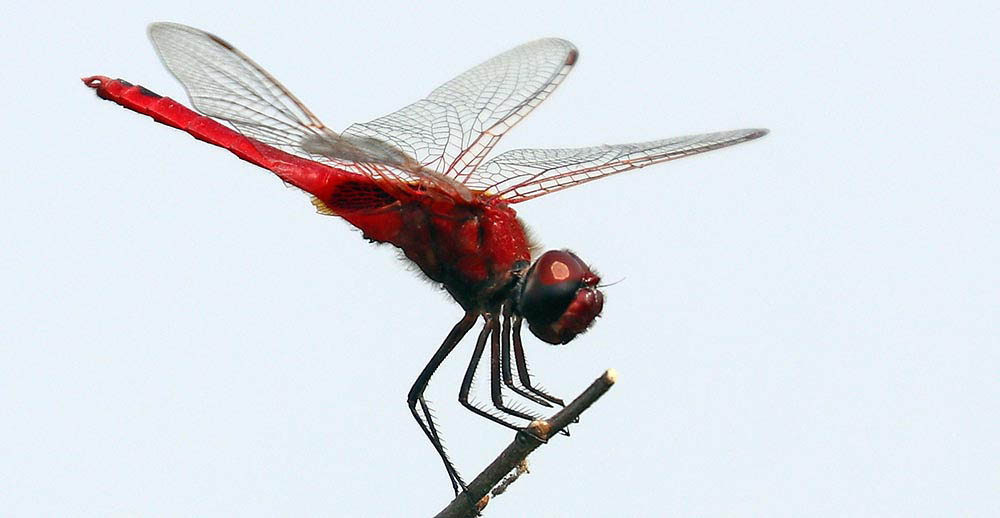 (Prek Toal, Cambodia)
(Prek Toal, Cambodia)The largest predator in these freshwater systems is usually a crocodilian, such as Crocodylus palustris, the 'Mugger Crocodile'. This species is found most commonly in India and Sri Lanka, but is also recorded in Pakistan, Nepal and Iran, but is probably extinct in Bhutan, Bangladesh and Myanmar.
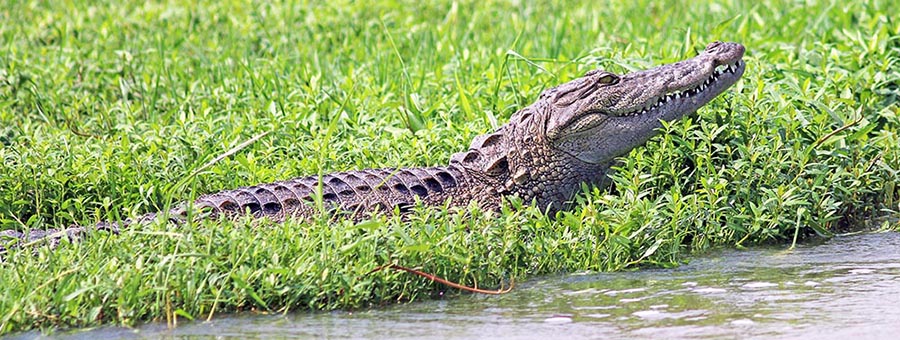
Another big reptile are the Monitors, including the common and potentially large Varanus salvator, the 'Asian Water Monitor'.
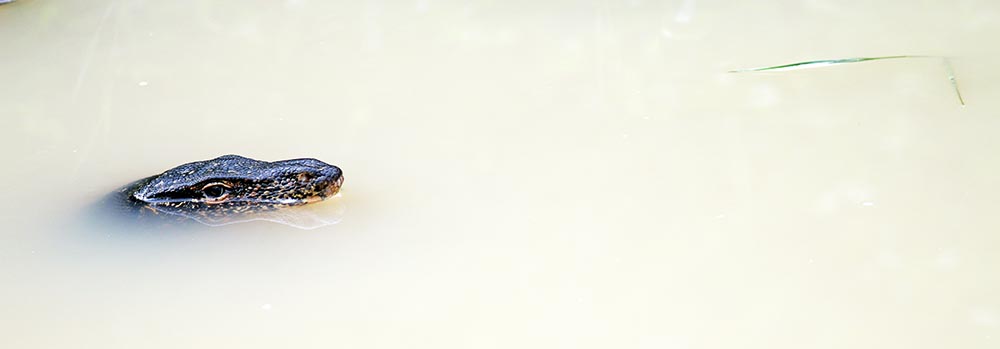 (Monitor Lizard, Sri Lanka)
(Monitor Lizard, Sri Lanka)The family Rallidae contains the rails, gallinules and coots, many of which have large feet and splayed out toes for 'walking on water'. The most common and widespread species are the various forms of the Purple Swamphen, and tropical Asia wetlands are no different with Porphyrio poliocephalus, 'Grey-headed (Purple) Swamphen' in across India and the south-east Asian mainland, while Porphyrio indicus 'Black-backed Swamphen' is the equivalent purple swamphen species of the Indonesian islands.
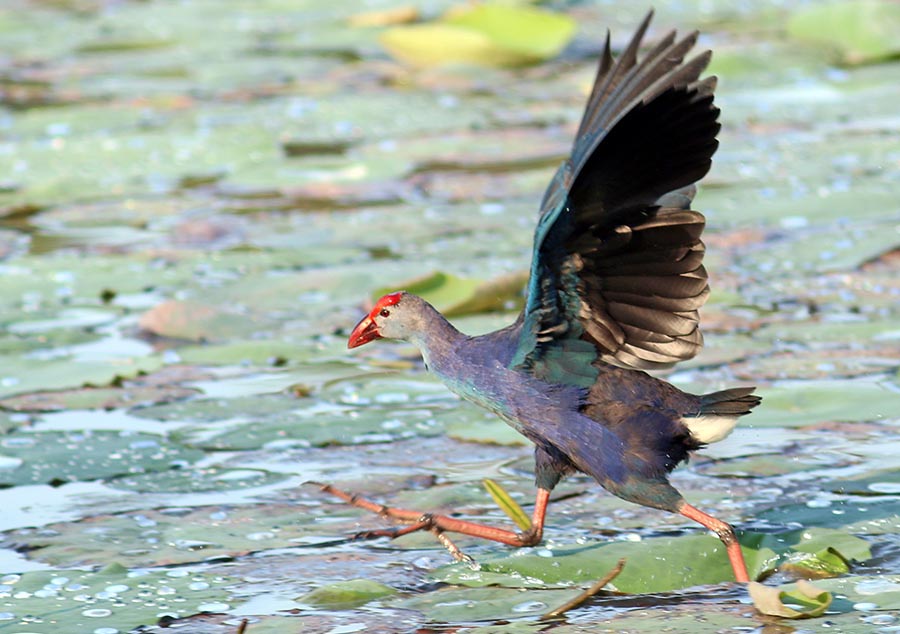 you try running with feet this big!
you try running with feet this big!Below is the more delicate Amaurornis phoenicurus, 'White-breasted Waterhen', found near fresh waterways from middle east, through India, and all of south-east Asia.
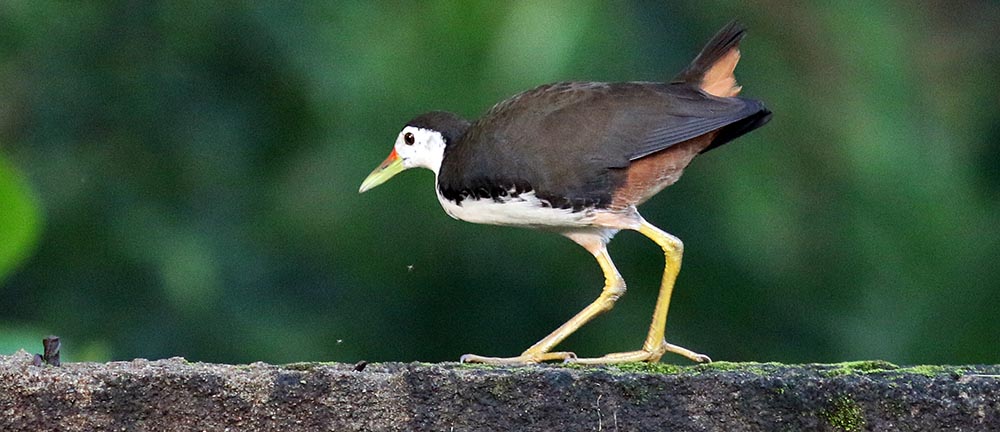
The family Burhinidae contains all the 'thick-knees' of the world, with several species hanging around in open areas with freshwater, including: Esacus recurvirostris, the 'Great Thick-knee'.
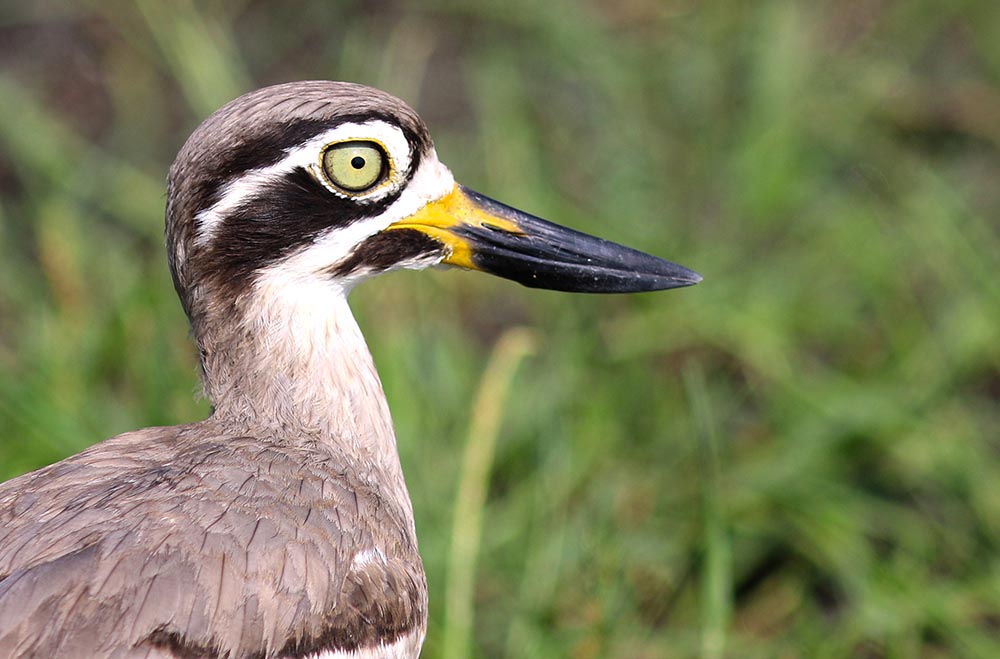 (Bundala, Sri Lanka)
(Bundala, Sri Lanka)The family Recurvirostridae includes the stilts & avocets, long-legged birds adapted to living in shallow water. The most common species is Himantopus himantopus, 'Black-winged Stilt', found in water habitats throughout Asia and other warmer parts of the world.
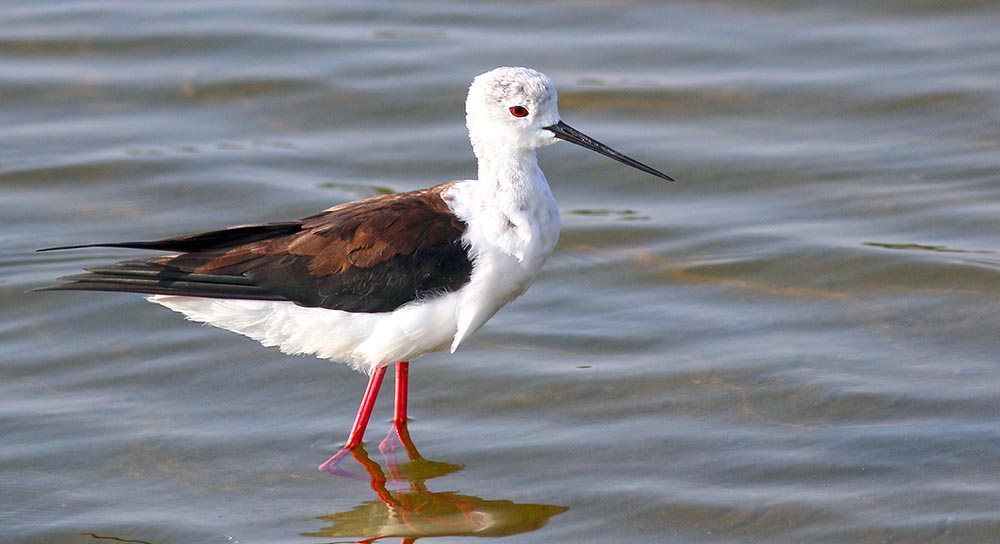 (Bundala)
(Bundala)The family Scolopacidae includes many of the smaller sandpipers along the edge of feshwater pools.
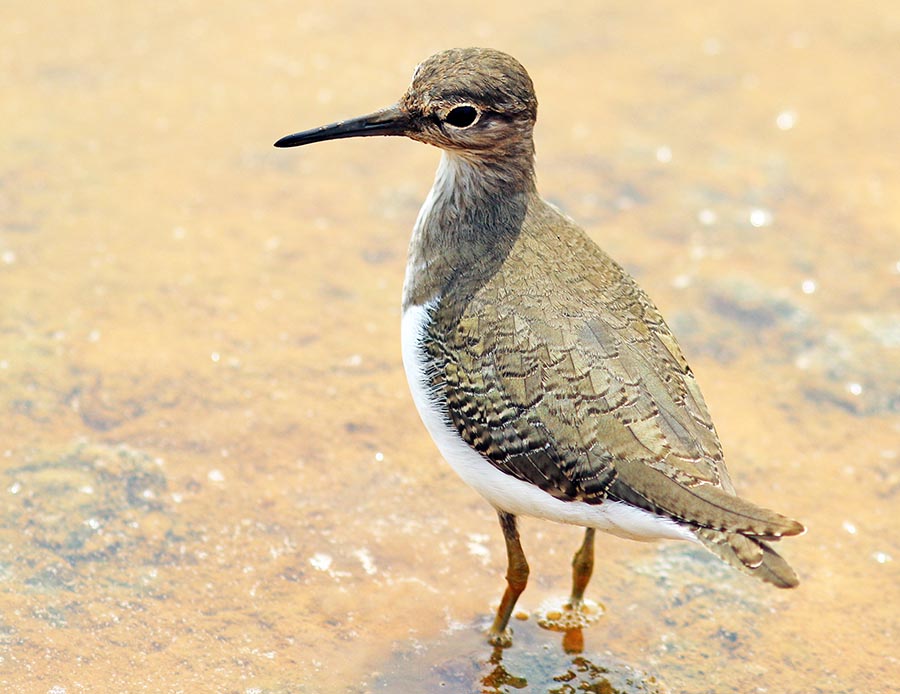
The gulls and terns of the family Laridae are mostly salt water species, but there are several that make a living in feshwater wetlands, such as the widespread Chlidonias hybrida 'Whiskered Tern'.
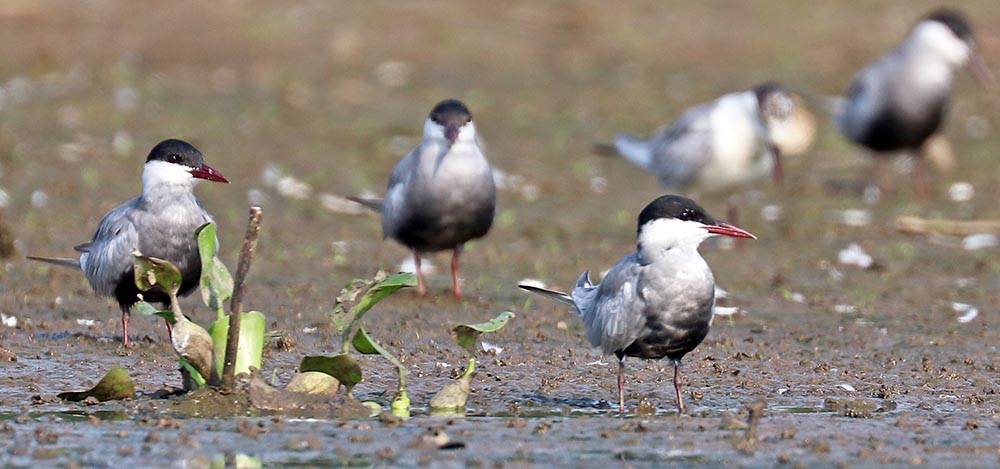
With their long legs, storks look superficially like herons, however, they are no longer considered closely related. Those long legs are used to wade through the aquatic habitats in which most species dwell. There, they hunt mostly for small animals such as insects, molluscs, fish, frogs, reptiles and mammals. They are often tall, and include some of the largest of all flying birds. Many species build huge nests, which may be used season after season. Their communication often includes loud and comical bill clapping.
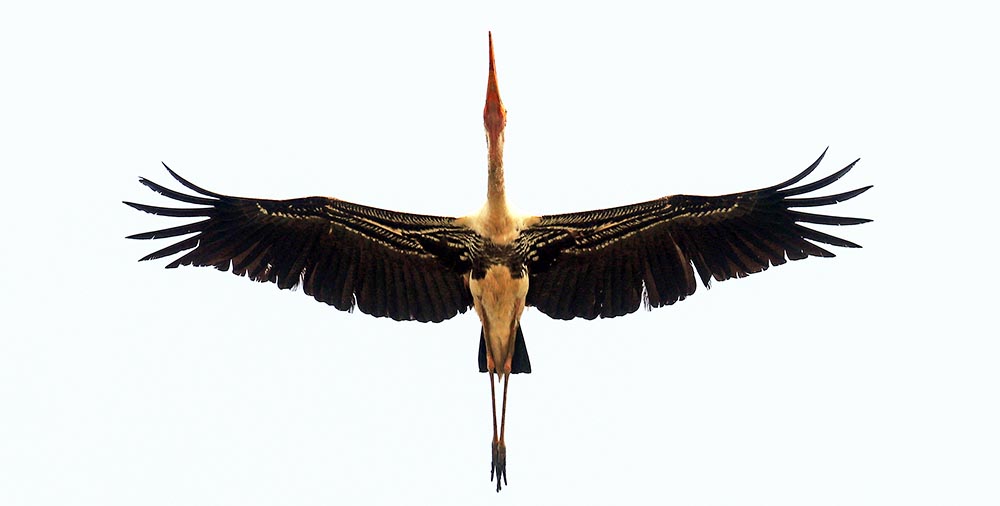 Painted Stork in flight, (Prek Toal, Cambodia)
Painted Stork in flight, (Prek Toal, Cambodia)Below is the 'Lesser Adjutant Stork'. More common than the closely related Greater Adjutant, and told apart by this species having more complete black on wing and red on face, and no large red neck lump.
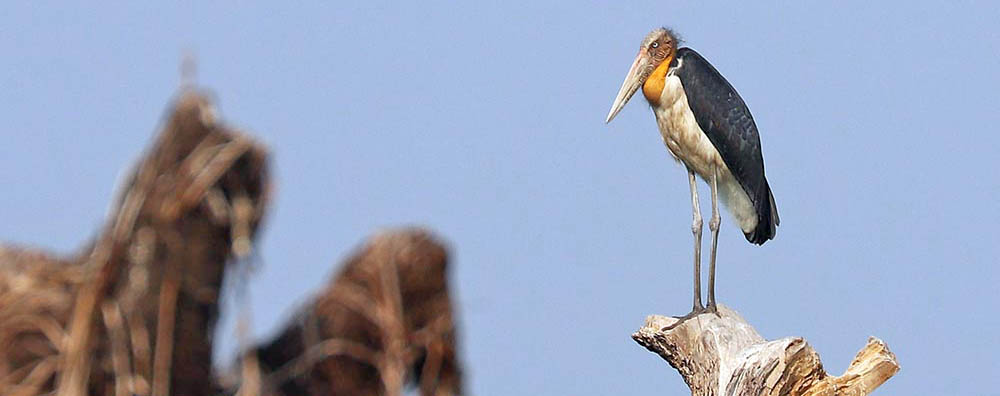 (Prek Toal, Cambodia)
(Prek Toal, Cambodia)Below is the Anastomus oscitans, the 'Asian Openbill Stork'. The bizarre bill with the gap when closed has evolved to feed specifically on molluscs.
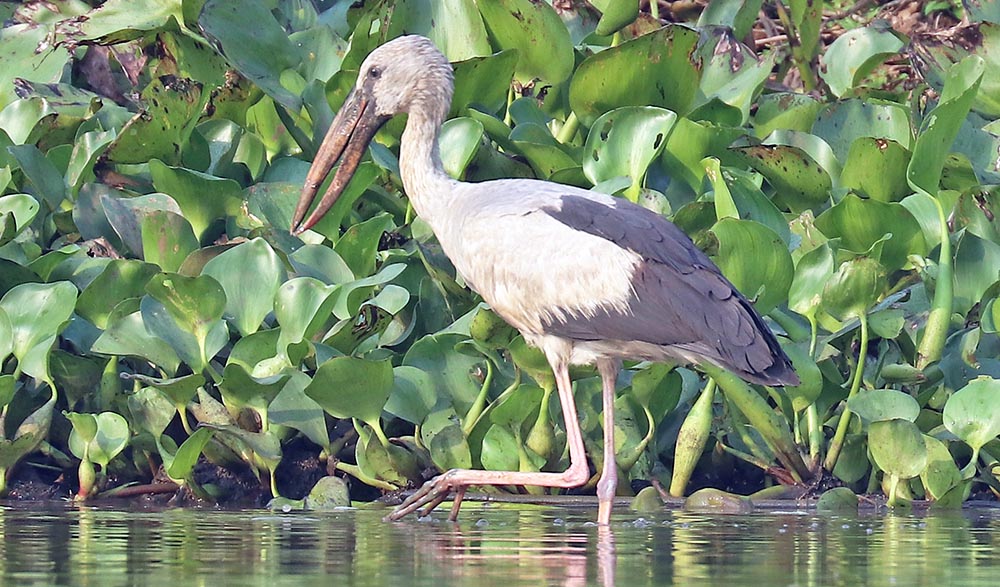 Asian Openbill Stork (Prek Toal, Cambodia)
Asian Openbill Stork (Prek Toal, Cambodia)Below is Mycteria leucocephala, the colourful 'Painted Stork', with a bill that curves at the end.
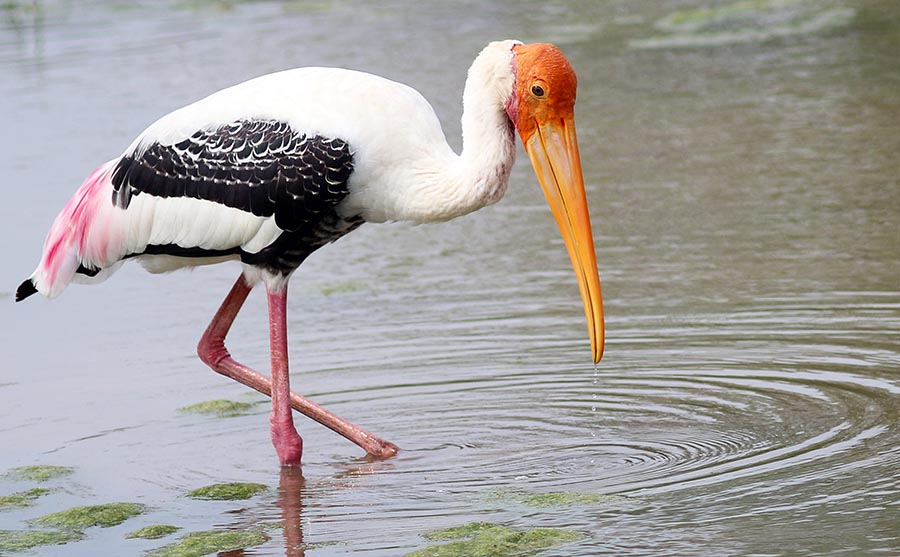 'Painted Stork' (Yala, Sri Lanka)
'Painted Stork' (Yala, Sri Lanka)The family Phalacrocoracidae contains all the Cormorants, birds that are found in freshwater wetlands across the planet. They usually feed on fish, including catfish and eels. They hunt by propelling themselves along underwater with their large webbed feet. Cormorants have long thin bills with a sharp tip, which is often used to impale their prey, such as the catfish pictured.
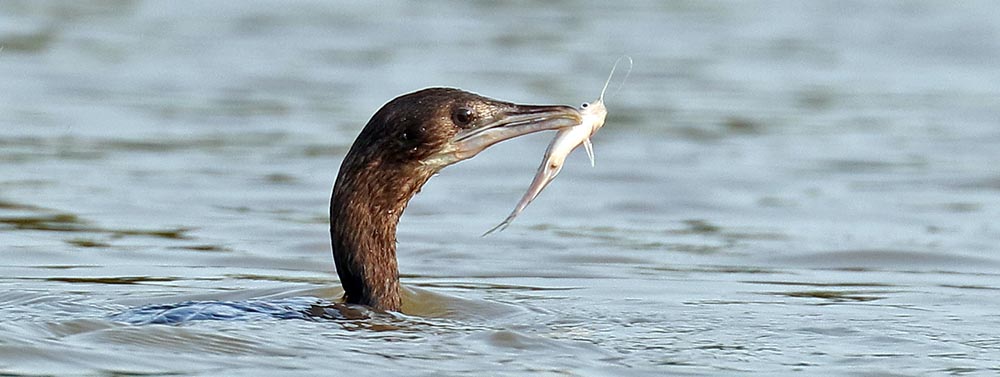
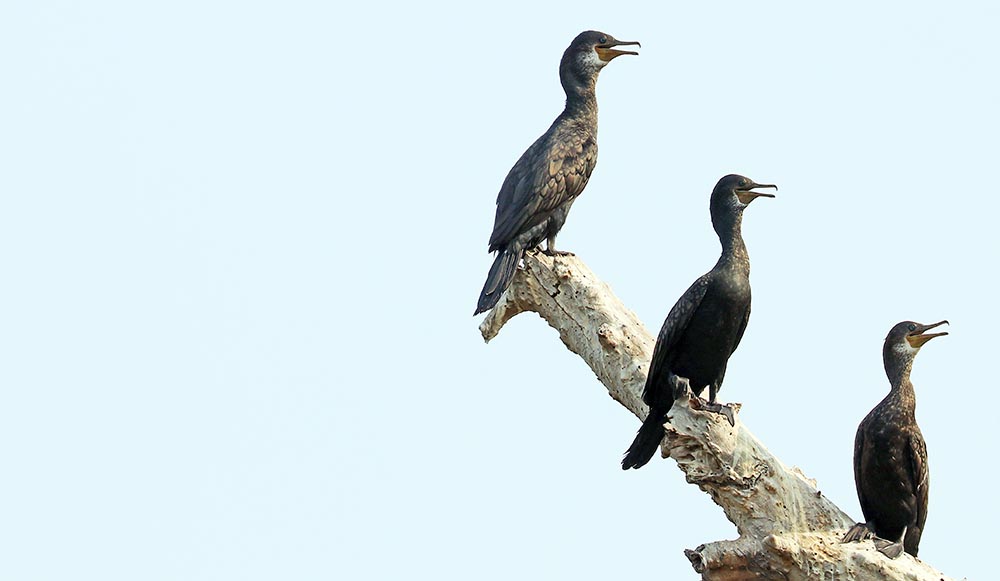 'Indian Cormorant', (Prek Toal, Cambodia)
'Indian Cormorant', (Prek Toal, Cambodia)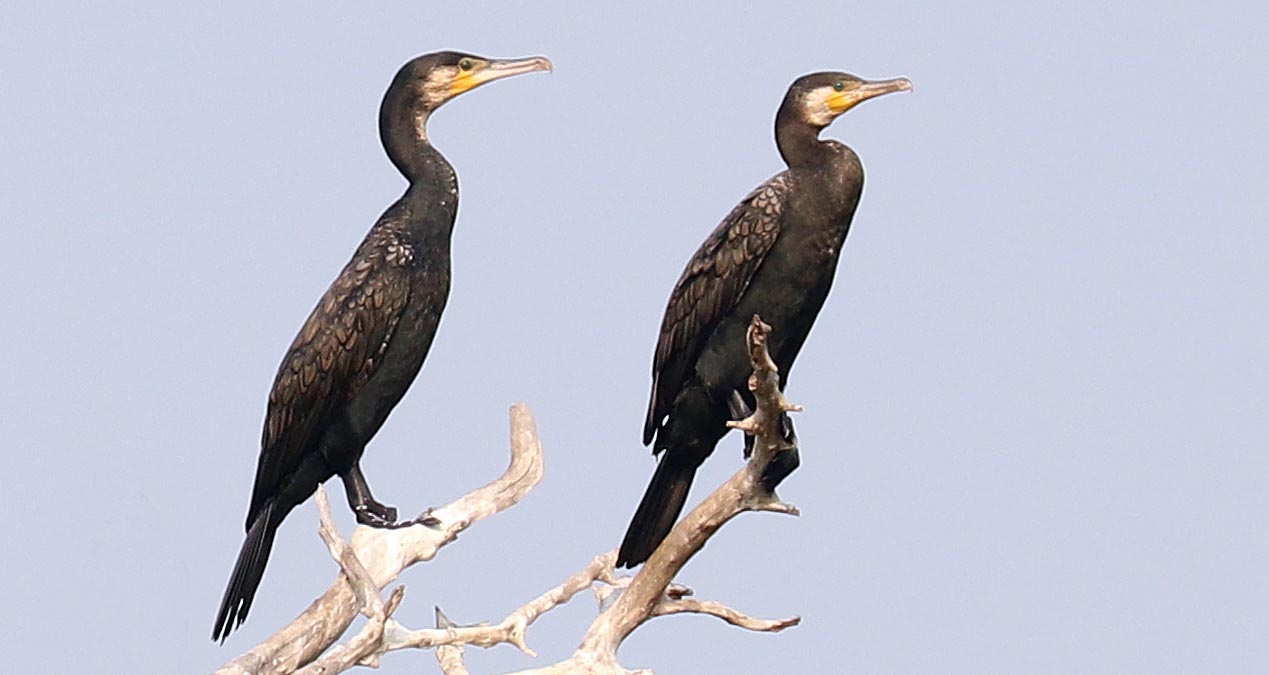 'Great Cormorant' (Prek Toal, Cambodia)
'Great Cormorant' (Prek Toal, Cambodia)The family Threskiornithidae includes the Ibis & Spoonbills.
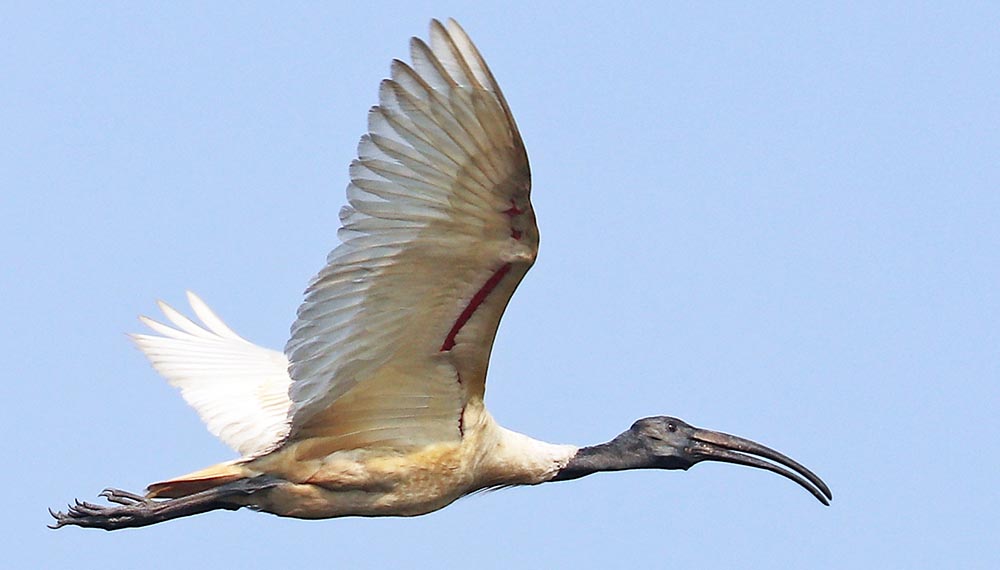 'Black-headed Ibis' (Prek Toal, Cambodia).
'Black-headed Ibis' (Prek Toal, Cambodia).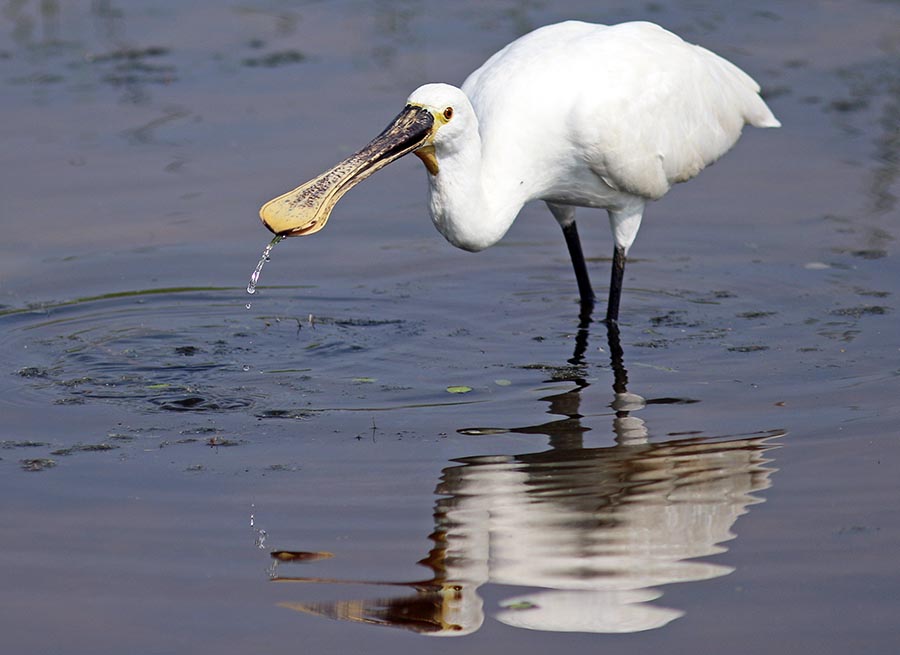 'Eurasian/Common Spoonbill', (Bundala, Sri Lanka)
'Eurasian/Common Spoonbill', (Bundala, Sri Lanka)All the birds in the family Ardeidae are 'Herons', with the white ones with plumes often being specifically referred to as 'egrets', however, these common names are often interchangeable. I call them the 'supermodels' of the bird world, strutting around with a slim build and long legs. They also have long sharp bills, which they use to jab and grab at their prey, which is mostly fish, frogs, and underwater invertebrates. The taller species have a neck that is usually long and kinked, and this fulcrum enables the head and bill to be snapped forward quickly. Herons are one of the most obvious bird in tropical Asian wetlands. They are also one of the most adaptable groups, as many species can also be found in the human-managed rice-fields that now dominate the tropical Asian landscapes.
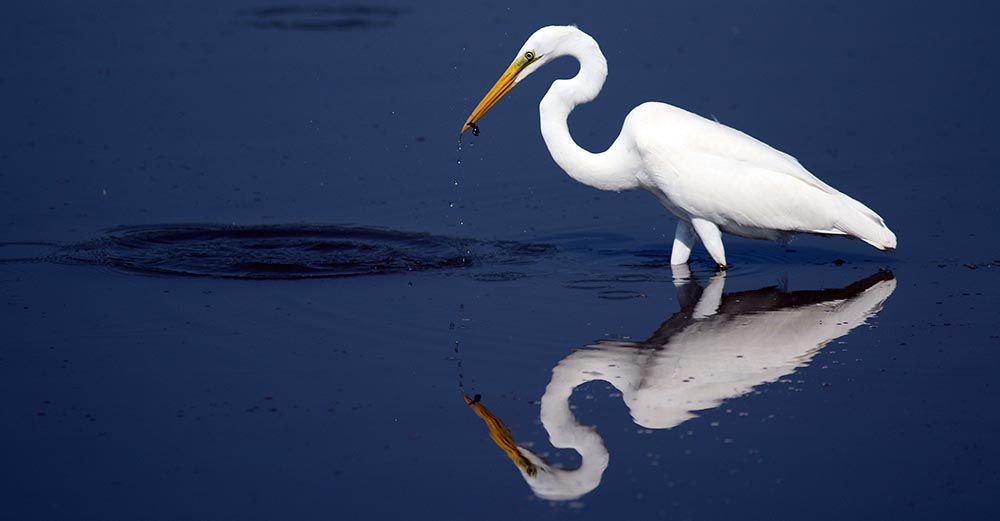 Great Egret (Udawalawa National Park, Sri Lanka)
Great Egret (Udawalawa National Park, Sri Lanka)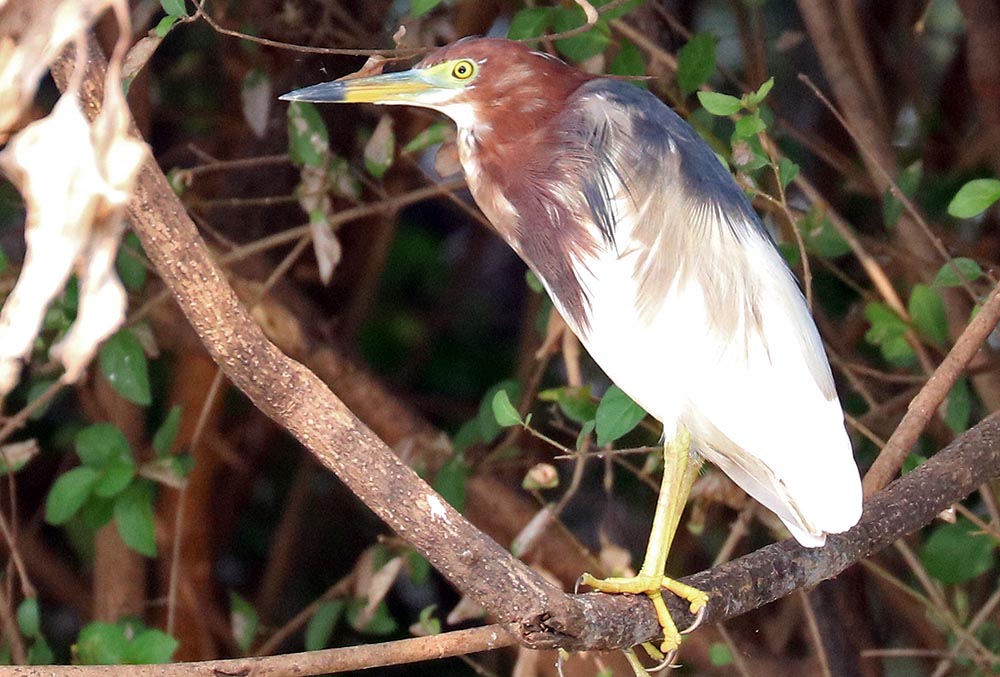 'Chinese Pond Heron' (Prek Toal, Cambodia).
'Chinese Pond Heron' (Prek Toal, Cambodia).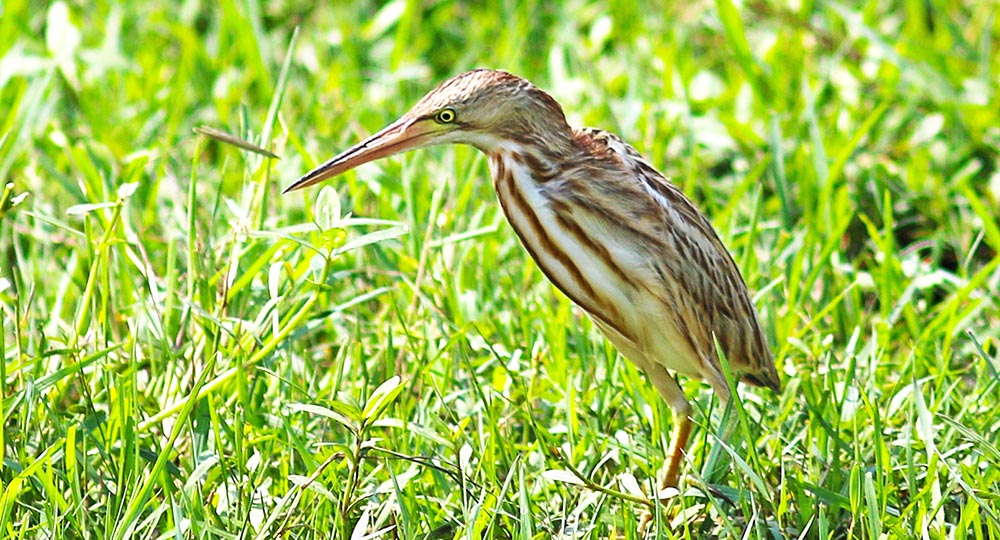 'Yellow/Chinese Little Bittern', (Bundala, Sri Lanka)
'Yellow/Chinese Little Bittern', (Bundala, Sri Lanka)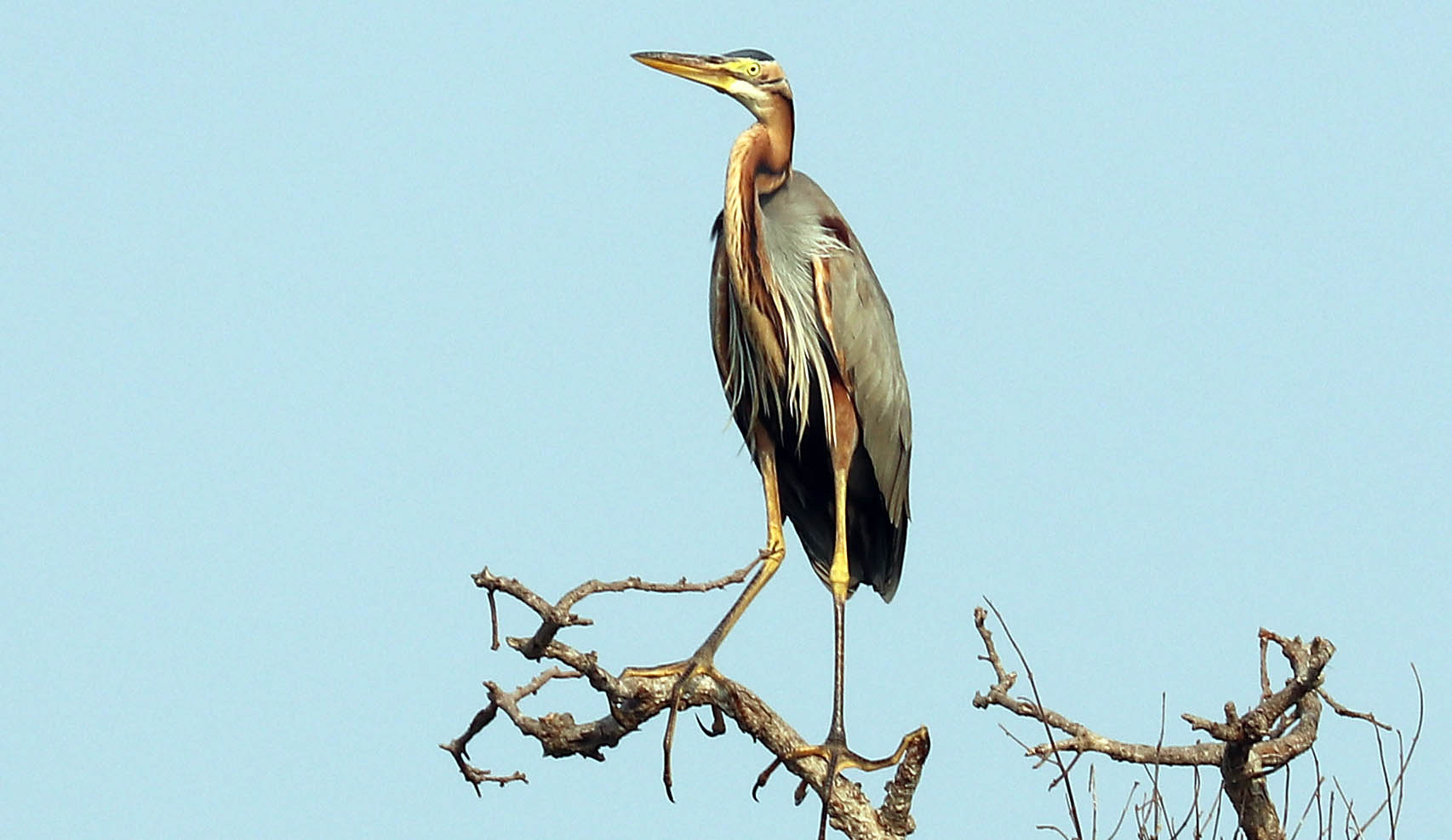 'Purple Heron' (Prek Toal, Cambodia).
'Purple Heron' (Prek Toal, Cambodia).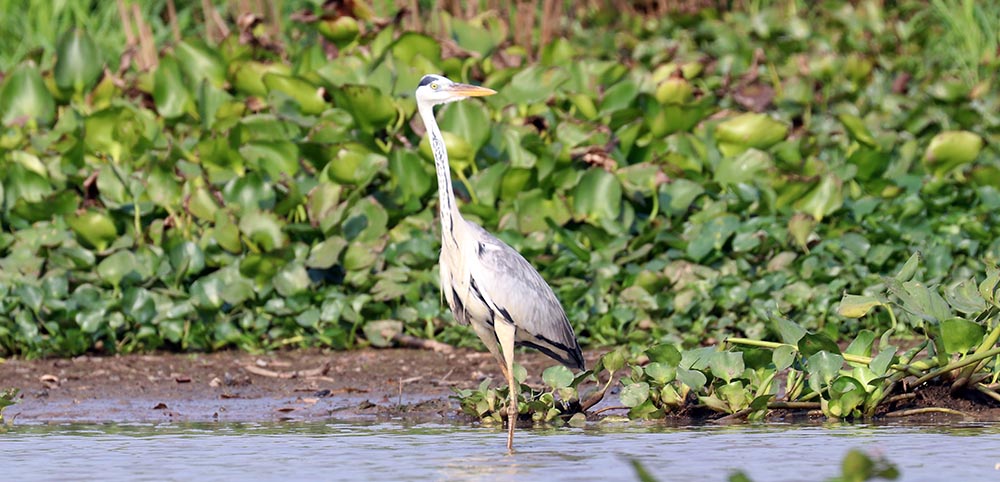 'Grey Heron', (Prek Toal, Cambodia)
'Grey Heron', (Prek Toal, Cambodia)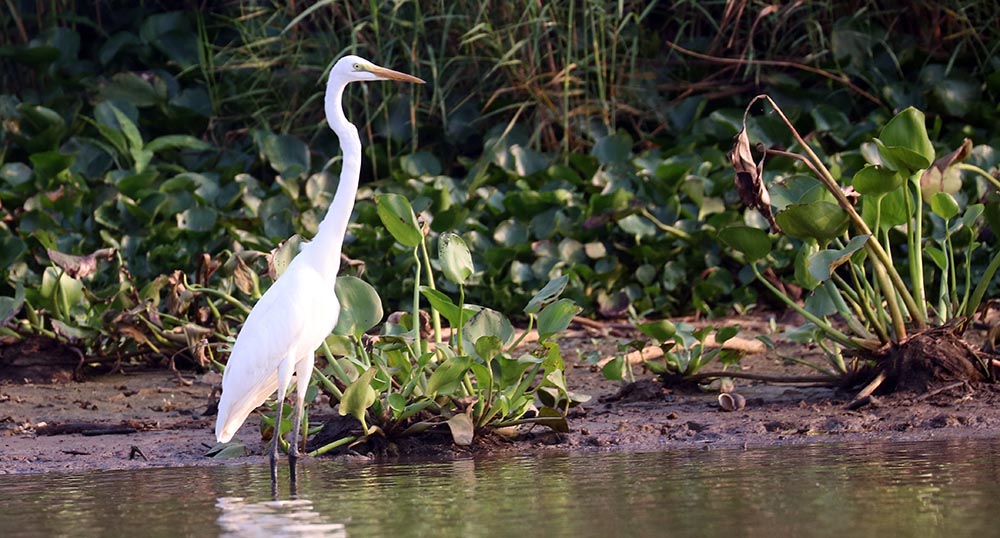 'Great Egret' (Prek Toal, Cambodia).
'Great Egret' (Prek Toal, Cambodia).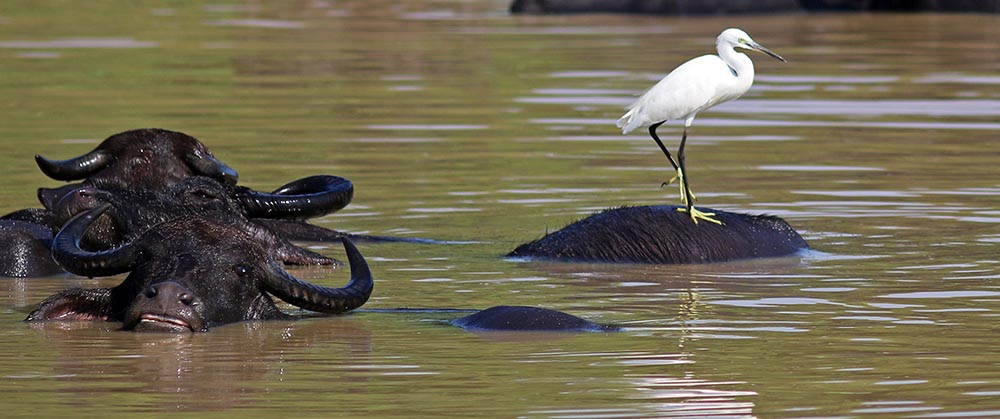 Little Egret
Little EgretSome of the larger top of the food chain predators are eagles from the family Accipitridae.
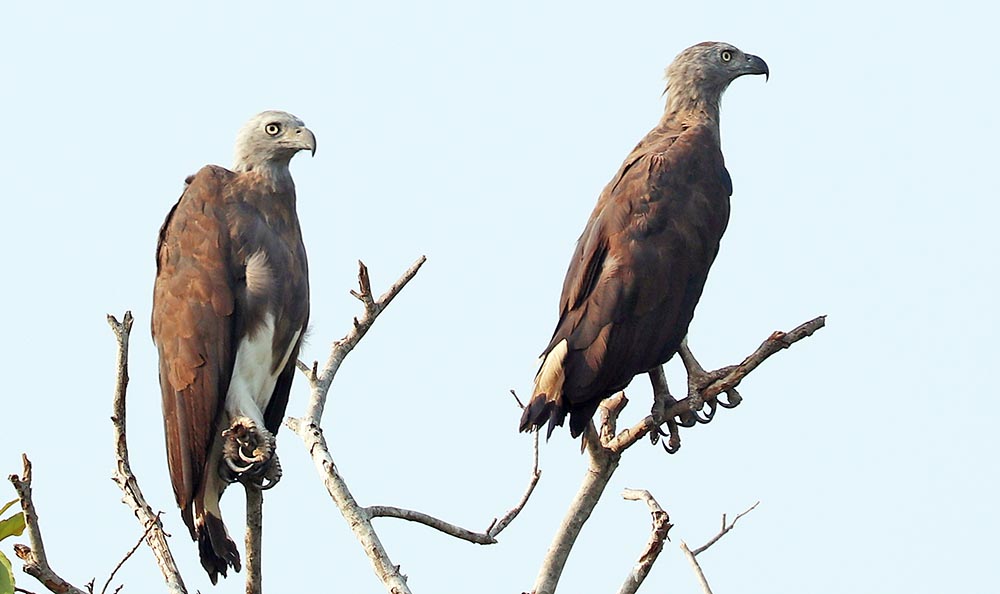 'Grey-headed Fishing Eagle', (Prek Toal, Cambodia).
'Grey-headed Fishing Eagle', (Prek Toal, Cambodia).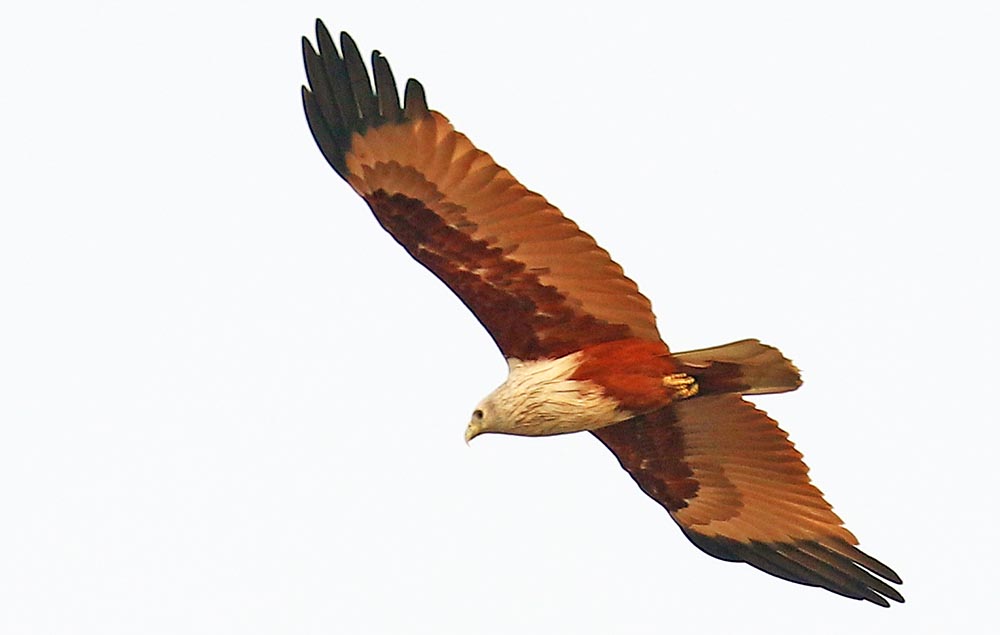 'Brahminy Kite' (Prek Toal, Cambodia).
'Brahminy Kite' (Prek Toal, Cambodia).The family Alcedinidae includes the Kingfishers, including Halcyon smyrnensis, the 'White-throated/breasted Kingfisher', which is found near water and around small settlements, from the middle east all the way across Asia to Bali. Often seen perched on wires.
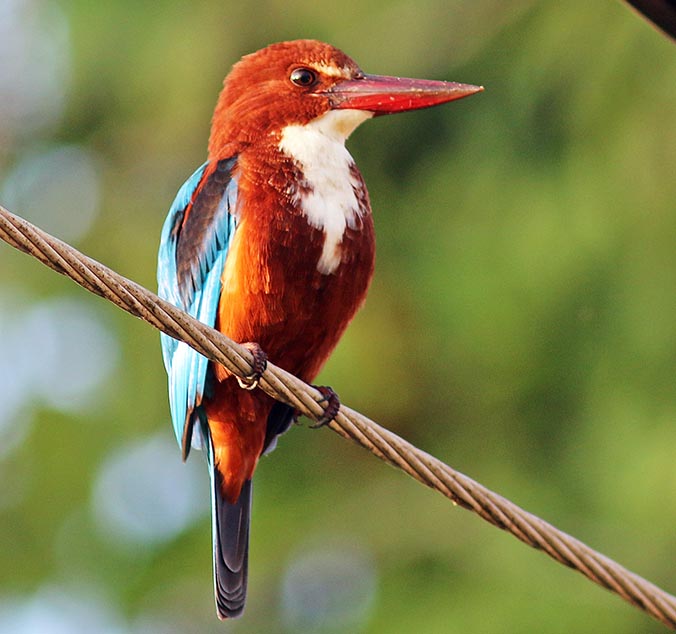 (Talangama wetlands, Sri Lanka)
(Talangama wetlands, Sri Lanka)Of the passerines found around freshwater wetlands: Acrocephalus stentoreus, the 'Clamorous/Indian Reed Warbler' is found around reed beds on lakes and rivers, from Egypt, east through tropical Asia and south to Australia.
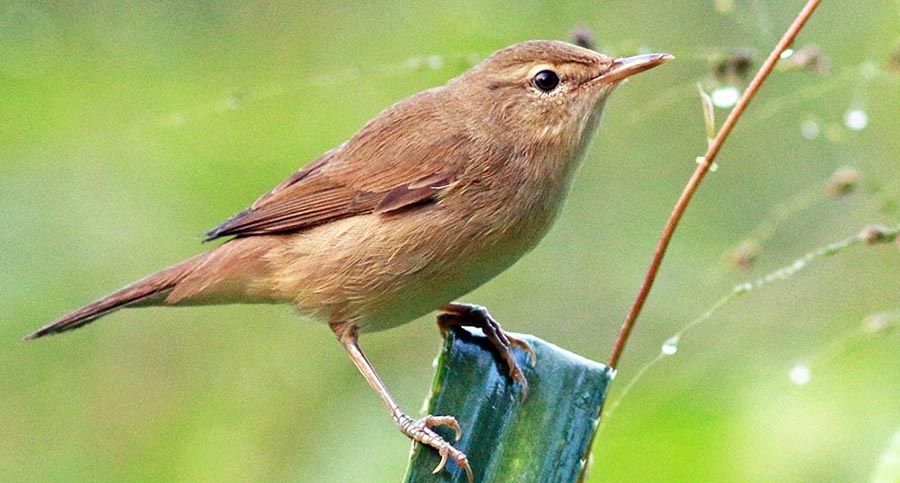
The family Bovidae includes the most commonly seen mammal of tropical Indo-Malayan freshwater wetlands, Bubalus bubalis, '(Domestic) Water Buffalo'. This is the buffalo seen in rice fields all over Asia. There are many wild populations of feral water buffalo through tropical Asia, as well as introductions in Africa and Australasia. (It is presumed to be derived from the wild species Bubalus arnee, which has been reduced to small populations in Asia, mostly in India).
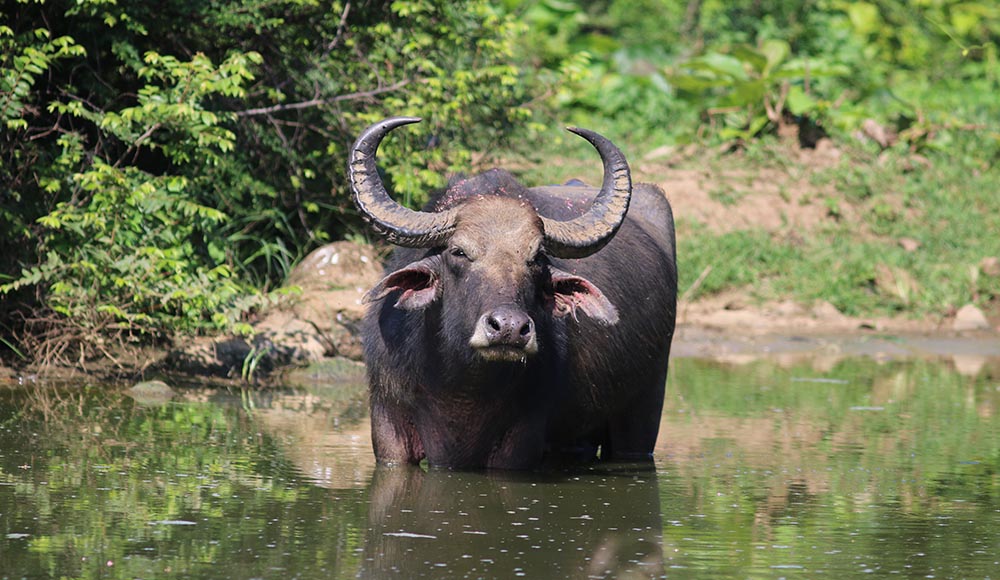
Places to experience tropical Asian freshwater habitats
Although many areas of south-east and southern Asia continue to be drained for development, there are still magnificent freshwater wetlands to be enjoyed, icluding: Bundala National Park and Talangama Wetlands in Sri Lanka, Paro & Thimpu, in Bhutan and Prek Toal in Cambodia



